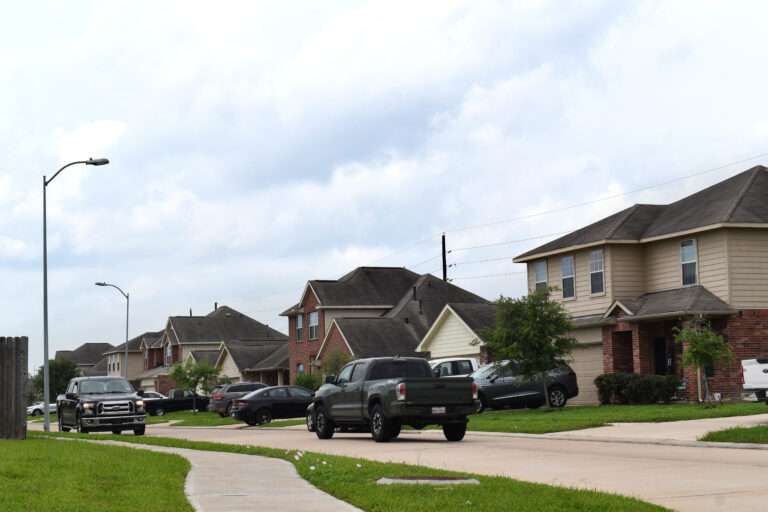Owning a home has long been an aspiration for many people across America, and one of the most effective ways to build generational wealth. Yet, due to the effects of the ongoing COVID-19 pandemic, rising interest rates, and housing affordability concerns, including the lack of affordable housing supply, homeownership may seem out of reach for many first-time homebuyers.
In addition, the United States continues to combat the legacy of decades of discriminatory housing policies and practices, which have contributed to a major homeownership gap and disparities in socioeconomic well-being among historically underserved consumers and communities. Currently, the rate of Black homeownership is 30 percentage points lower than for white households – and is as high as it’s been in the past 50 years, according to the U.S. Census Bureau.
“The path to affordable quality rental housing and equitable access to sustainable homeownership has never been equally accessible to all due to a legacy of discrimination in housing and the mortgage finance system in America,” said Katrina Jones, Fannie Mae’s Vice President of Racial Equity Strategy and Impact. “This is compounded by entrenched obstacles that perpetuate housing inequity, such as insufficient credit, a lack of savings for upfront security deposits or down payments to purchase a first home, and misinformation about the home buying process.”
Now, through its Equitable Housing Finance Plan, Fannie Mae is helping to address these inequities with new solutions for renters, prospective homebuyers, and existing homeowners in three key areas:
* Housing preparation: Helping Black consumers prepare early for sustainable homeownership and access to affordable, quality rental housing through the credit building and financial education.
* Buying or renting: Removing unnecessary obstacles Black consumers face as they shop for, rent, or purchase their first home.
* Moving in and maintaining: Enhancing sustainable housing so that renters and homeowners can withstand disruptions or temporary hardships and remain stably housed.
Education Empowers Everyone
For many, the home-buying process seems complex and it’s difficult to know where to start. No matter where consumers are on their housing journey, homeownership education can help aspiring homebuyers feel prepared and empowered rather than overwhelmed. Fannie Mae’s HomeView is a free, online, comprehensive, and easy-to-follow education course that helps consumers navigate the homebuying process.
Available in both English and Spanish, HomeView breaks down the homebuying process into seven simple steps and addresses common myths and misinformation, including answering questions many first-time homebuyers have. Users also have access to checklists, financial calculators, and other free tools and information, which they can use anytime, as often as they want.
HomeView also meets the homeownership education requirement needed to qualify for many mortgage loans, including low-down payment loans. Those who complete the course can earn a certificate of completion to share with their lender to meet that requirement.
“I encourage people who are considering buying a home to start the education process early and have that certificate ready to share with their lender to help them qualify for certain low down payment mortgage products. You can do this while you’re also working on building your credit, saving for a down payment, and other activities that HomeView recommends as you prepare for homeownership,” said Jones.
Credit Building for Renters
During the HomeView course, users learn that credit history is an important factor in determining mortgage qualification. However, 20% of the U.S. population has little to no established credit history – a group in which Black and Latino consumers are disproportionately represented.
In fact, Black consumers identified insufficient credit as their single biggest obstacle to getting a mortgage and did so at a much higher rate than white consumers (29% to 18%), according to a National Housing Survey study from Fannie Mae.
While credit history is a key element in evaluating a borrower’s ability to make a mortgage payment, fewer than 10% of renters today have their monthly rent payments reported to the credit bureaus, putting many prospective first-time homebuyers at a competitive disadvantage. Some organizations are recognizing this problem and taking steps to include rent payment histories in their credit evaluation process.
For example, Fannie Mae launched a new feature last year that allows mortgage applicants who have paid rent for at least 12 months to use that payment history to help lenders qualify them for a mortgage loan, even if those positive payments do not appear on their credit report. This helps to remove a barrier for first-time homebuyers and increases equitable access to homeownership opportunities for consumers with limited credit histories.
“For aspiring homebuyers, responsibility counts, reliability counts, and now rent counts. A solid rent payment history can open the door to homeownership for first-time homebuyers,” Jones said.
Ask your lender if they offer this option or visit FannieMae.com/MakeRentCount to find a list of lenders near you who consider rent payment history in their mortgage qualification process.
Source: BPT








